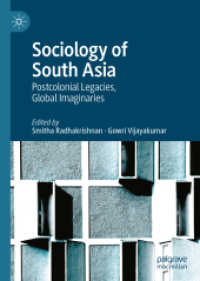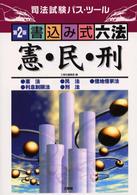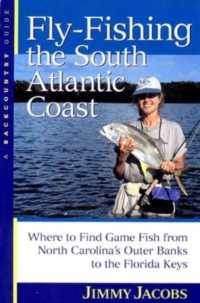- ホーム
- > 洋書
- > 英文書
- > Nature / Ecology
Full Description
Seabirds are global travellers connecting oceans and seas all over the world, and facing multiple threats at local and global scales. Seabirds are long-lived top predators, reflecting changes at lower trophic levels, and are good models to assess ecological changes produced by human societies. Thus, world-wide collaborations are needed to understand seabird ecology and to develop effective conservation measures benefitting both humans and seabird populations.
This book provides a modern overview on seabird biodiversity studies: it begins by covering the most up-to-date techniques to study seabirds, and then focus on pragmatic issues related with interactions between seabirds and humans, the use of seabirds as ecological indicators and conservation of seabirds. It gives an updated insight on all these topics and highlights gaps that need further development for a comprehensive understanding of the relationships between seabirds and human actions.
This book covers the response of the seabird research community to a biodiversity crisis aiming to contribute towards environmental sustainability. It should provide inspiration to a wide range of professionals and students, including the much needed world-wide collaboration between research groups and practitioners. In this way seabird research and conservation provide an inspiration for the solution of global issues such as climate change.
Contents
Part A: Techniques to Study Seabirds 1. An Introduction to Seabirds and Their Study 2. Conventional and Modern Approaches to Study Seabird Trophic Ecology and Diet 3. A Physiological Toolbox to Explore the Relationships Between Seabirds and Their Changing Environments 4. Tracking Seabirds for Conservation and Marine Spatial Planning Part B: Seabirds Interacting with Human Activities and Infrastructures 1. Seabird and Fisheries Interactions 2. Urban Gulls Living with Humans 3. Seabirds and Marine Renewable Energy Sources 4. Seabirds and Biotoxins Part C: Seabirds as Ecological Indicators 1. Seabirds as Indicators of Forage Fish Stocks 2. Seabirds as Indicators of Oceanographic Changes 3. Seabirds as Indicators of Metal and Plastic Pollution 4. Antarctic Seabirds as Indicators of Climate Change Part D: Actions for Seabird Conservation 1. Light Pollution as a Seabirds' Conservation Threat 2. Eradication and Control of Invasive Mammal Species as a Seabird Conservation Tool 3. Identifying and Establishing Marine Protected Areas Worldwide: The Contribution of Seabird Data







